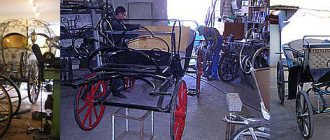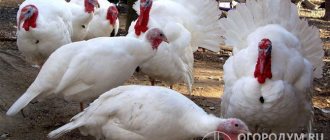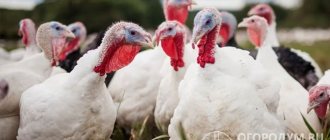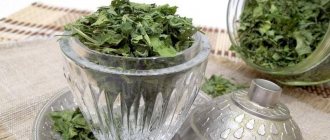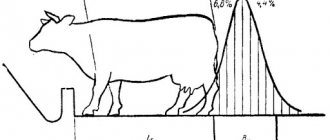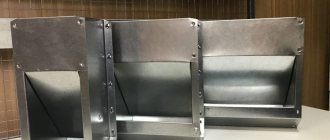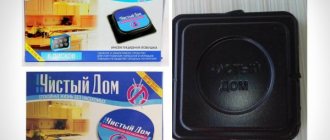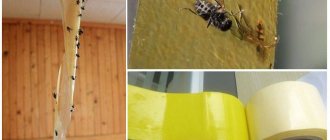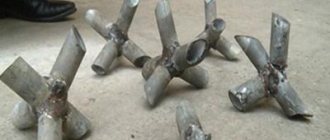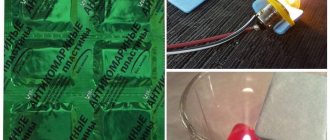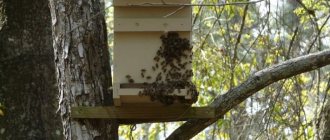Home » Articles about turkeys » Feeders for turkeys
Feeders made of plastic, wood or metal are installed in the poultry house. Each of the materials has its pros and cons. Different designs of turkey feeders are used, the way they are placed and the option of filling them with food differ. Some models are easy to make yourself using available materials.
DIY feeder for turkey poults
Store shelves are filled with fresh meat at all times of the year. Why do many turkey lovers continue to raise them in their backyard? Each of them can confidently answer that meat obtained from their own poultry is much tastier, fresher and safer. But keeping turkeys from the outside seems like a very troublesome task. To this should be added the significant costs of inventory. However, home craftsmen can make feeders and drinkers for turkey poults on their own. To do this you will need improvised or cheap materials, great desire and our instructions.
It’s easy to make a feeder for turkey poults with your own hands
Preparing to build a turkey poultry barn
Before construction, you need to develop drawings of the turkey poultry itself and the adjacent enclosure. This way you can calculate the amount of material spent. If possible, adults should be fenced off from young animals and have the opportunity to walk separately. To do this, organize an aviary with feeders and drinkers so that the birds can freely reach them. It is necessary to build a building with the expectation that the livestock will increase. No more than one adult turkey can be kept per 1 m², since the birds are large and, unlike chickens, do not really like roosts.
The barn project should include not only the poultry room itself and the pen, but also a vestibule. It will protect the turkeys from drafts and exposure to cold air when the door is opened. In order to save space. In the vestibule you can make shelves for storing household equipment or food for animals and birds. Housing plans sometimes include a separate area for brood turkeys, as well as small turkey poults.
In order to consume less electricity for artificial lighting of the room, it is recommended to take care of the windows. If during the day all the corners of the barn are illuminated, then the windows are located correctly and this is enough to illuminate the barn. The window is located at a height of at least a meter above the ground.
Building a turkey poultry house with your own hands involves laying smooth floors from wooden planks or concrete. This part of the barn plays an important role in protecting the birds from the weather and predators.
The floor in the turkey house itself should be inclined to facilitate the cleaning process. Often, for this purpose, a removable flooring is made under the perch, since this place is most contaminated with feces.
Each farmer can choose the material for laying floors independently. This could be concrete, wood or earth. Each of these coatings has its own pros and cons:
- An earthen floor has a low cost and this is its only advantage. Such floors do not maintain temperature well in winter; they have to be covered with straw during frosts. Also, feces, spilled water and leftover food mix with the soil, forming slurry. Such violation of sanitary standards leads to fatal diseases. In winter, turkeys standing in this slurry can freeze their paws. Sometimes earth is mixed with clay in equal proportions. In this case, moisture is better repelled from the floor covering, but cleaning still remains problematic. Such floors have to be replaced frequently.
- Concrete floors are distinguished by the fact that they do not absorb moisture and are easy to clean and disinfect. It also reliably protects the floor from undermining by predators who want to feast on turkey meat. The main disadvantage is that in winter it can become very cold, and it is recommended to cover it with straw or sawdust.
- A wooden floor requires large material costs, but it protects turkeys from the cold better than others. It is quite easy to clean and disinfect. But over time, the tree absorbs moisture and begins to swell and rot. If you do not clean the turkey poultry in a timely manner, the smell of bird droppings will be absorbed into the boards.
Whatever the floor in the barn, the main requirement for it is ease of cleaning, as well as compliance with sanitary standards. It is recommended to place it 20-25 centimeters above the ground.
Tips for the master before starting work
When making a turkey feeder, remember that all materials and accessories should be washed thoroughly. Ideally, they are disinfected with special liquids. Feeding devices are divided into the following groups, depending on the content:
When making each of them with your own hands, it is wiser to select appropriate materials. Feed containing a large amount of moisture should be placed in plastic or steel containers. Most bird keepers try to make large capacity containers for dry food so that they can be filled at once for the whole day. But not everyone does this. Some poultry farmers prefer compact feeders, sometimes even for each turkey. Ease of use will increase if it is attached to a pole or other vertical surface. You just need to make sure that the turkey feeder is raised above the floor, but not too high.
To make the eating area complete, you can install bird drinkers. But most place it outside because turkey poults love to roam outside. During the first month, carefully monitor the feeders and drinkers, because the birds are actively emptying them. By building equipment for feeding turkeys with their own hands, poultry farmers reduce the required financial costs for arranging the premises.
Drinkers for turkey poults can be placed outside
Design
The simplest option is a tray (box) with sides up to 0.15 m high. A design without partitions is usually used for storing dry or wet food (depending on the material). Grooved products are similar to option 1, but are complemented by a removable restrictive grid (it divides the container into cells). This allows:
- use the feeder as a complex for supplying different types of feed;
- delineate feeding areas.
Hopper turkey feeders are ideal for dry feed. The farmer has the opportunity to provide the daily amount of feed (grain) - he does not have to add it himself. As food is consumed, it enters the tray. Thanks to the closed design, the purity of the grain mixture is maintained and it does not become damp.
The placement of feeders is different, they are:
- located on the floor (the best option for young animals);
- suspended from a horizontal surface or mounted on a wall (these options are designed for adults).
Plastic pipe feeders
The advantages of this type of structure can be considered ease of manufacture with your own hands, no need for drilling and planing. You will need the following materials:
- pipe cutting tool;
- two plugs for 110 mm;
- plastic pipe with a diameter of 110 mm, having a length of 1 m;
- tee of the appropriate size.
- the pipe is divided into three segments of different sizes, having lengths of 10, 20 and 70 cm;
- close a piece of pipe 20 cm long with a plug from below, and put a tee on the opposite end;
- connect the longest piece from above and install a plug on it;
- a short piece is inserted into the side outlet.
- Place the structure in place and fill it with dry food. To avoid tipping over, it is recommended to attach it to any vertical surface.
The above diagram of a do-it-yourself feeder is very convenient, because turkeys will not be able to throw its contents at their feet. The capacity of the structure will also please you, providing food for up to ten turkeys. It all depends on the length of the reservoir pipe. At the end of the day, you should install a cap on it to prevent debris from getting inside.
Feeder for turkeys made of plastic pipe
There is another way to build a feeder from sewer pipes with your own hands. For it you will need:
- two sections of pipe with a diameter of 110 mm: 30 and 50 cm;
- two plugs;
- knee 90 degrees.
Tools that will be useful are an electric saw and a drill. The manufacturing technology is quite simple:
- Connect the pipe sections using an elbow. Place the thirty-centimeter piece horizontally at the bottom, and the second one vertically.
- Drill 2 holes in a short pipe on opposite sides. Through them, turkeys will be able to take dry food. If the holes turn out to be small, then they should be expanded with a file or jigsaw to the desired size. The diameter reaches 70 mm and more.
- We close the pipe with a plug on the other side.
- Mount the structure in place and add grain or mixed feed.
The advantages of such designs are obvious: low cost of raw materials and speed of production.
Homemade bunker feeder
Simple homemade drinking bowls
Turkeys drink a lot of water. During the day, they can drink two or three times more liquid than food. Therefore, farmers must provide the brood with sufficient water. The abundance of fluid has a positive effect on the health of the farm - it gets sick less often, in addition, the quality of its meat improves.
Homemade automatic bird drinker
The nipple drinker is a convenient design that is actively used on modern farms. Their work is based on the supply of water from the container through nipples. This design protects the farm from unnecessary waste of water and prevents young animals from choking. Water is supplied through the nipple.
The simplest design is a bottle drinker for domestic turkeys. You can make it yourself from scrap materials - a deep nylon cap and a plastic bottle. It is worth noting that a glass jar is also suitable for this type of drinker.
Scheme for making a bottle drinker
Heat a knife or awl and make a small hole in the neck of a plastic bottle at a height of 2 cm. Place a large cap on the neck. The bottle is filled with water and turned upside down. In this position, water will begin to flow into the lid, filling it to the brim. The design works on the principle of vacuum drinkers.
The simple design has its advantages and disadvantages. Among the strengths, it is necessary to highlight the ease of assembly and the minimum list of required materials. However, a homemade bottle drinker is not stable. At home, adult turkeys often overturn a fragile structure, depriving them of a source of water.
You can increase the stability of the model with your own hands without resorting to complex technological solutions. The turkey drinker can be attached to a vertical support at a height of 20–30 centimeters for poults and 40–50 centimeters for adults.
Drinker made of plastic pipes.
Sewer pipe as a drinking bowl
The advantages of this device: easy to make, suitable for turkeys of different ages.
Minimum list of materials for manufacturing:
- Bulgarian;
- Two plugs for a plastic pipe with a diameter of 110 mm;
- Plastic pipe 1.1–1.5 m long and 110 mm in diameter;
- Tee-separator for pipe.
The pipe is cut into three parts, 20, 20, 70 cm each. Twenty-centimeter pipes are connecting pipes, so they are closed from below with plugs. A tee is installed on top of the connecting pipe.
Hopper feeder
They make it from available materials and tools with their own hands:
- plastic pipes with a diameter of 15 and 30 cm;
- a piece of plywood;
- large water bottle;
- plumbing tape;
- fasteners: nails, screws, corners;
- rope;
- hacksaw;
- hammer.
A wide pipe is attached to the plywood base using corners and self-tapping screws. A cut is made in a narrow piece at one end: a cut is made in the middle along the pipe up to half, and then one of the resulting parts is cut off with a cross cut. The bottom of the plastic cylinder is removed and placed in a narrow pipe with the neck upside down. Secure the resulting connection using fastening tape. After this, fill the feeder and check its performance.
Hopper feeder for turkeys and other poultry
What and how to do?
When looking at original ideas on how to make a feeder with your own hands, you can give preference to products made from plastic pipes for plumbing needs. This product is quite simple, but it eliminates unnecessary costs for arranging a poultry house. The food will not be scattered on the floor. Cleaning tube feeders is easier than other types. The product is designed for 10 birds.
To work you will need:
- plastic pipe with a diameter of 0.1 m and a length of 1 m;
- a pair of plugs;
- plastic cutting tool;
- tee.
They start by cutting the pipe into 3 segments: 0.1, 0.2 and 0.7 m each. The longest part is left alone. On shorter parts, circular notches are cut. A plug is installed at one end of a 0.2 m long tube, and a tee is installed at the other. Then the shortest piece is inserted into the tee.
The remaining splitter input is used to install the last segment. A second plug is mounted at its end. The feeder is attached to a suitable vertical surface with the longest section. In this case, the tubes with holes should be at a height of 0.15 m from the floor. It is necessary to ensure that the exits are directed towards the ceiling.
You can make an interesting feeder from an ordinary plastic bottle. It is used for feeding chicks or in the format of feeders for individual individuals. You will need:
- PET bottle with a capacity of 5 l;
- plank or plywood;
- strong rope;
- insulating tape;
- saw on plastic;
- fastening corners;
- nails;
- self-tapping screws;
- plastic pipes (0.3 m in diameter and such that will allow the bottleneck to be inserted).
A piece of suitable length is cut from the largest PVC pipe. It is from there that the birds will be more comfortable pecking at food. The ideal fragment should be of such a height that the birds do not have to overcome obstacles. From another pipe you need to separate a fragment that is twice as long as the first one. It is sawed longitudinally, but about 0.1 m does not reach the center.
One of the sawn parts is cut out to the end. It should look something like a scoop for bulk products that sellers use. A plastic plumbing pipe is attached to the board, which will be the base, with corners and screws. Its diameter is 0.3 m; the pipe should be directed upward. The mounting angles are placed in the inner part of this tube.
Attention: do not allow the fasteners to protrude from the walls. This often causes severe injuries to birds.
The bottom of the bottle is removed. Then the neck is inserted into a smaller pipe (from the side that was not cut). The connection point is covered with electrical tape.
Wooden feeder
Wooden structures are considered durable, capable of serving for decades. But this is with proper care. The material for the product should be selected individually in each specific case. Writing and indicating the parameters of wooden products is somewhat easier than the process of their manufacture itself.
However, real home craftsmen will do it without much difficulty. In the entire process, there are main stages that should be followed.
You should start by creating a sketch and drawing of the future structure. There are several types of wooden turkey feeders. Their sizes differ significantly. On a sheet of paper, make a rough drawing and apply the dimensions determined by eye. After this, proceed to detailed calculations and drawing. This stage requires attentiveness, spatial imagination and the ability to work with geometric formulas.
DIY turkey feeders
Turkey breeding in our country is gaining momentum and many farmers have begun to give preference to these birds rather than domestic chickens.
In order for the business of raising turkeys to be profitable, the birds need to create comfortable conditions, buy or make convenient feeders and drinkers.
Turkeys differ from chickens not only in appearance, but also in weight and size, which must be taken into account when choosing feeders and drinkers.
Turkeys also have a different digestive tract, therefore a different nutritional program. You shouldn’t be afraid of this - all feeders and drinkers can be easily made from simple and inexpensive materials.
Perches for turkeys: drawings and construction instructions
Having decided on the materials and having found the necessary tools, you can begin drawing up and developing a drawing. Even if you want to implement your personal ideas for building a unique cage for turkeys, you need to be guided by already tested and invented schemes.
Consider the overall dimensions of the entire turkey poultry and the location of windows, doors, walls, feeders, drinkers, ash and sand trays and other details. The location of the walking area in relation to the entrance to the turkey house is also important. According to farmers, the window should open easily and provide a powerful stream of light for the comfort of turkeys. The feeder is located along the walls or wall of the turkey poultry at the level of the bird's body for convenient feeding.
Please note that the proper level of location of the turkey’s place of residence is not located in a draft, because this will lead to diseases of the birds and the inability to perform an important function: egg production. The poultry farmer must be comfortable pouring feed, adding water and collecting eggs from perches, so consider their overall placement throughout the poultry house. The turkey should also have easy access to these items.
The turkey should also have easy access to these items.
How can you quickly and at minimal cost build a perch? Follow these guidelines from experienced farmers:
Types of feeders for turkeys
Three types of feeders are recommended for turkeys:
- a platform divided into sections,
- continuous feeding area.
- a box feeder with mesh walls and a sloping roof. It is suitable for fresh greens that birds can reach through the mesh.
The first types of feeders are used for mineral feeding.
The second type of feeders may have a hopper device, and they are also often automated for convenience. The compartments can be filled with lime, shell, and fine gravel.
The main and most popular type of feeder is simple containers for daily food.
If there is enough space in the house, place a long feeder, providing access to it from either side. Bunker models must be placed so that there are no difficulties in cleaning and disinfecting containers.
The height of turkey feeders should be about 15-20 cm, and fill them by a third so that the birds do not scatter the food.
Features of devices and their placement
To create drinking bowls you need to use the necessary materials of good quality. You should also consider the size and age of turkeys, their number and frequency of use of water containers. Young individuals consume about 0.3 liters per day, older individuals - 0.5-0.6 liters. Each bird should have about 5cm of personal drinking space.
It is recommended to make drinking bowls for turkeys dismountable, this will make them easier to clean. To make them less dirty, they should be placed at chest level with the birds. Often individuals jump on them, so the products must be durable and not collapse under their weight. If the poultry house contains a small number of livestock, it is recommended to install separate drinkers. This will avoid fights over territory. It should also be remembered that chicks are much smaller than adults, so drinking bowls for turkey poults should be placed slightly lower.
When installing drinking devices, you need to rely on the following factors:
- Structures should be made so that water does not splash onto the turkeys' limbs. Otherwise, this may cause frequent illness and hypothermia;
- In addition to drinking bowls, you need to prepare containers for bathing during hot periods so that they can cool themselves;
- To prevent the water from freezing in winter, a circle with small holes made of wood is placed inside.
It is necessary to constantly monitor the amount of water in the sippy cup. You can assemble drinking devices yourself or purchase ready-made products, and they can be manual or automatic. There are several types, different in design and type of work.
In this case, several large containers (basins, buckets) are traditionally used. They are placed on a layer of material to prevent debris from getting into the water. But they are suitable for adult birds, as chicks can fall into them and drown. Although this is the most economical option, requiring no money or time to manufacture.
How to make a turkey feeder - instructions
If you are not ready to shell out decent money for a factory-made turkey feeder, we suggest you make one yourself.
Before starting work, you need to thoroughly wash and disinfect all materials, as well as tools that will be used.
Consider the option of making a feeder using a plastic pipe.
For this you will need:
- plastic pipe about 1 m long and 110 mm in diameter, two plugs,
- pipe tee,
- pipe cutting tool.
VIDEO INSTRUCTIONS ” alt=””> Operating procedure:
- Cut the pipe into three lengths of 10, 20 and 70 cm.
- Close a 20 cm long section with a plug on one side and put on a tee on the other.
- Connect a 70 cm long piece on top and put a plug on it.
- Place a 10 cm long piece into the side outlet.
- Fill the feeder with food and secure it to a vertical surface so that it does not tip over.
Such a feeder is convenient because the birds will not throw away food, but it will contain quite a lot of food.
Plastic pipe feeder
Another option is a bunker-type feeder.
To make it you need:
- scissors for plastic or metal,
- plastic bucket,
- dog food bowl with sections.
VIDEO DESCRIPTION ” alt=””> Operating procedure:
- Cut as many holes in the bottom of the bucket as there are compartments in the bowl. They should be of such a size that the food flows freely into the bowl.
- Connect the bowl and bucket with screws.
- Fill the bucket with food and close it with a lid.
- Hang the feeder vertically or place it on a flat surface.
By hanging such a feeder by the handle, you can be sure that the birds will be provided with food in the next few days.
Thus, from cheap scrap materials you can quickly and at minimal cost make convenient feeders for your turkeys.
How to make water bowls for turkeys with your own hands
Turkeys drink much more water per day than they eat feed. This means that the drinking bowl must be large enough so that there is enough water for everyone. This will avoid the death of the herd, as well as the spread of various diseases.
Turkey poultry in the barn
The interior should also be equipped for the birds to live comfortably. Here you need to install the following devices:
- feed containers;
- drinking bowls;
- perches;
- nesting houses;
- ash baths;
- containers for shell rock and gravel.
There are several types of feed containers:
- small troughs;
- grooved structures.
When choosing one option or another, take into account the dimensions of the bird and their height. Feeders are placed at the level of the turkeys' dorsal region. For more rational use, it is necessary to pour food into the container to 1/3 of the total height.
Compound feed is usually given from bunker-type feeders, which are designed for several feedings.
Containers for gravel and other mineral fertilizers are located at a height of about 40 cm from the floor. Add the necessary additives as needed. It is recommended to leave such containers freely available.
Making a separate container for wet mash is not entirely advisable. To save effort and time, it is enough to divide the trough feeder into several compartments with partitions, into which certain types of feed will be poured.
There are a huge number of options for drinking bowls, regardless of the chosen container, it is best placed at the level of the turkey’s neck. To maintain cleanliness in the premises, the drinking bowls are covered with a net so that the birds have no problems getting to the water. The net will serve as a kind of protection against the desire of birds to climb completely into the drinking bowl.
Drinking bowl
Perches are necessary for turkeys to rest and sleep: they are installed in such a way that there is at least 50 cm of perch per bird. The main criteria here are the strength of the sticks and their removal of possible burrs. Perches are installed in the warmest part of the house.
When arranging perches, preference should be given to removable structures that can be easily dismantled during general cleaning.
Nesting houses provide certain conveniences for both bird owners and turkeys. The females will have a place to lay their eggs, and the farm owner will not have to walk around the entire premises to collect egg products.
Turkey nest
The role of nests is given to wooden boxes that are suitable in size for the birds. The number of houses is calculated based on the number of females. As a rule, one nest is required for 5 laying hens, which is best installed in a dark place in the house
The most important requirement for a design is that it is safe for turkeys.
Ash baths help birds keep their plumage clean. In the summer, you can do without this - it will be enough for the turkeys to take dry baths in the yard. But with the onset of cold weather, it is worth taking care of the presence of wooden boxes with small sides, which must be filled with a sand-ash mixture. This method reliably protects turkeys from the appearance of skin and feather parasites.
- The walls are covered with roofing felt.
- make a lath for thermal insulation material.
- Insulation is reinforced on the sheathing.
- cover it with roofing felt.
- fix the entire structure with planks or sheathing: in this case, the turkey barn can be decorated with siding yourself.
- If the floor in the barn is unpaved, then they make a screed on it, cover it with roofing felt, cover the floor with expanded clay, and cover it with another layer of waterproofing. After this, a wooden floor covering is made.
- Electricity is installed in the barn and lamps are installed.
- It is recommended to make a window in the barn.
- A ventilation pipe with a shutter is installed in the roof. If necessary, open the shutter and ventilate the room.
It is recommended to make an extension to the turkey barn, a vestibule. It is necessary to protect the room from cold air. Turkeys are very thermophilic. Even a small temperature difference can cause them to become hypothermic. An area for an aviary is fenced off near the barn. In it the livestock will exercise.
A brick building is considered the most reliable. When building in warm regions, 1-brick masonry is used. In cold areas, the walls of the poultry house are built with 1.5 bricks. Walls and roofs are protected from moisture and insulated
Whatever the building, it is important to maintain optimal conditions for keeping turkeys. For them, the main thing is cleanliness, warmth and fresh air.
Automatic drinking bowl and feeder for poultry: geese, chickens, turkeys. Do-it-yourself.TitleDrinker and automatic feeder for poultry: geese, chickens, turkeys. With your own hands. Watching time 2:24 Title From city to village / Making nests for turkeys Watching time 13:23
Types of feeders
Turkey feeders come in different types:
Made from various materials:
Made of wood
These feeders have good durability, however, they are difficult to wash and disinfect. Suitable for dry food.
Made of metal
Durable, reliable material, easy to clean and disinfect, but when making the feeder you need to make sure there are no sharp corners or edges. You can remove them by bending a sheet of metal inward. Suitable for wet food.
Made of plastic
During production, only very durable plastic should be used, otherwise heavy turkeys may damage it. Suitable for all types of feed.
Made from mesh or metal rods
Suitable for fresh greens - mesh or wires allow turkeys to safely reach the grass.
Regular (trays with sides)
Sectional
Divided into several parts. Suitable for fertilizing: gravel, lime, and shells can be placed in different compartments.
Bunker (automatic)
They do not require constant control over the amount of food in the tray - food is added automatically as the turkeys eat it. Suitable for dry food.
With automatic lid lifter
The lid rises automatically when the turkey stands on a special platform in front of the feeder. The big advantage of this mechanism is that when the birds are not eating, the food is always closed.
Wall-mounted and floor-mounted
Floor-mounted ones are suitable for turkey poults.
Material
The simplest option is wooden trays. Their advantages:
- environmental friendliness;
- stability and reliability of the structure.
The main disadvantage is that it is difficult to ensure complete disinfection of wooden structures due to the presence of pores. Absorbed food remains become a favorable environment for the development of pathogenic microorganisms. Taking this into account, wooden containers are only suitable for dry food, as well as crushed stone and chalk (shells) - mash cannot be placed there.
Metal products are hygienic. Providing their disinfection is not difficult - in addition to soap solutions, you can use firing. The main disadvantage is that the sharp edges can easily injure the bird. You can eliminate the risk of injury by bending the metal edges inward. Solid metal containers are suitable for both dry and wet food. Lattice models are used for laying fresh herbs.
Another universal material suitable for different feed options is plastic. Since turkeys are heavy, when choosing a plastic feeder, preference is given to models with the thickest walls and a stable bottom.
General requirements for feeder equipment
The height of the feeder should be on average 15 cm. To do this, it can be attached to a pole or any wall.
To prevent food from scattering, it is more convenient to fill regular feeders one third full.
It is best to install two feeders for turkeys: a solid one for daily feeding, and one divided into sections for feeding.
You can make one long feeder for turkeys, or you can install several in different places in the poultry house, it depends on the size of the room.
Turkeys can overturn bunker structures, so for greater stability it is better to further strengthen them.
After installing the feeders, you should monitor the livestock for several days to see if the designs are comfortable for them, and if anything needs to be changed.
Feeders that are easy to make yourself
Due to the fact that making a turkey feeder with your own hands is not difficult, you can avoid unnecessary financial costs when arranging a poultry house.
Feeder made from plumbing plastic pipes
One of the easiest to make. Its advantages are that the food does not scatter on the floor, as well as ease of cleaning. Designed for 10 birds.
- plastic plumbing pipe with a diameter of at least 100 mm and a length of at least a meter;
- plugs suitable for the pipe size – 2 pcs.;
- a tool suitable for cutting plastic;
- tee suitable for the pipe size.
- The plastic pipe must be cut into 3 parts: one should be 10 centimeters long, the second should be 20 cm long, and the third should be 70 cm long.
- Leave the longest segment unchanged, and cut round holes on the other two: through them the turkeys will get the food in the pipe.
- Install a plug on one end of a 20-centimeter pipe, and a tee on the other.
- The shortest section must be attached to the tee so that it appears to be a continuation of the 20-centimeter length.
- Attach the remaining section of pipe to the last entrance of the tee, and place a second plug on the end of it. It should be a T-shaped design.
- The structure is attached to any vertical surface with the longest part so that the pipes with holes are 15 cm from the floor. You need to make sure that the holes face the ceiling.
How to build a turkey poultry house
It is believed that frame construction is the most optimal option. You can quickly build such a barn for turkeys with your own hands on your own plot.
Typical design of a poultry house for turkeys (photo)
The area of the poultry house for turkeys is determined depending on the number of birds. So, for 4-5 turkey poults or 1-2 adults you will need 1 square meter of area.
Electricity supply
If the bird is kept indoors all year round, then electricity is supplied to it. For lighting, lamps are used at a rate of 3 W per 1 square meter for turkey poults and 5 W per 1 square meter. m. for an adult bird. The lamps are hung at a height of 1.5-1.7 m from the floor. Electrical cables should be placed out of reach of turkeys. It is best to place the cables in corrugated hoses for better protection from damage and moisture.
If possible, the walk is located on the south side. The area is fenced around the perimeter and on top with a mesh, the recommended height is 2 meters. There must be a net on top to avoid attacks by birds of prey. Access to the run from the poultry house is provided by manholes, which must be equipped with doors. The size of such holes should be approximately 50x50 cm or more, depending on the size of the bird.
Windows, floors, ceilings
The windows in the poultry house should consist of two frames and be located at a distance of 20 cm from the ceiling. The number of windows is selected so that all corners of the room are illuminated.
Floors in turkey poultry houses must be hard and level. Straw or sawdust is used as bedding. The recommended thickness of litter for turkey poults is 7-10 cm, for adult birds - 25-30 cm.
Important! Bedding is important especially in winter, because the main cold rises from below and a layer of straw or sawdust will prevent this
Ventilation
Must be forced. It is necessary to equip a system that would supply 4-6 cubic meters. m of fresh air per hour per 1 kg of live weight and change the air about 6 times per hour. The hood is installed in the lower part of the room. Drafts are not allowed in the poultry house.
To arrange ventilation, you can use a ventilation duct equipped with a valve. It is installed on the ceiling, the recommended dimensions are 25 by 25 cm.
Making feeders for turkeys with your own hands
We can buy fresh turkey meat in the store at any time. Why do amateur poultry farmers continue to breed turkeys at home? For each of them, the main reason for raising their own turkey stock is complete confidence in the quality, freshness and safety of meat and eggs.
Feeders for turkeys
Many people would like to get their own turkeys, but they are put off by the hassle of care and the cost of equipment and feed, because these birds have a different structure of the digestive tract and a diet different from other poultry. That is why turkey livestock requires special equipment and care products. In the article, we have collected recommendations with instructions from craftsmen that will allow you to independently make effective and inexpensive feeders for turkeys, turkeys and poults, as well as drinkers.
Organization of walks
A house for turkey poults should be built in such a way that the turkeys feel comfortable there.
The bird also needs proper organization of walking, which is a prerequisite for the life of the bird. The best option for a turkey is when it has 20 square meters of free air space, but if you look at this size through the eyes of a farmer raising turkeys in normal home conditions, these sizes are very large. In order for the turkeys to be happy and benefit exclusively from being outdoors, the soil must be prepared in advance before the birds move into the barn. The soil must be sown with seeds of useful and perennial grasses; the most suitable ones are considered to be alfalfa or clover. You can also sow any type of annual grass on the ground, as it is no less useful, including oats and peas. If the area near the barn is sown with such herbs, then this is a real godsend for turkeys, especially for characteristic individuals. The turkey differs from similar individuals in that it is more active and mobile, and therefore requires space. For example, a turkey can calmly walk several kilometers and go back to the poultry house, but a turkey that has its own young returns to such walks only after the young have lived for 2-3 weeks.
